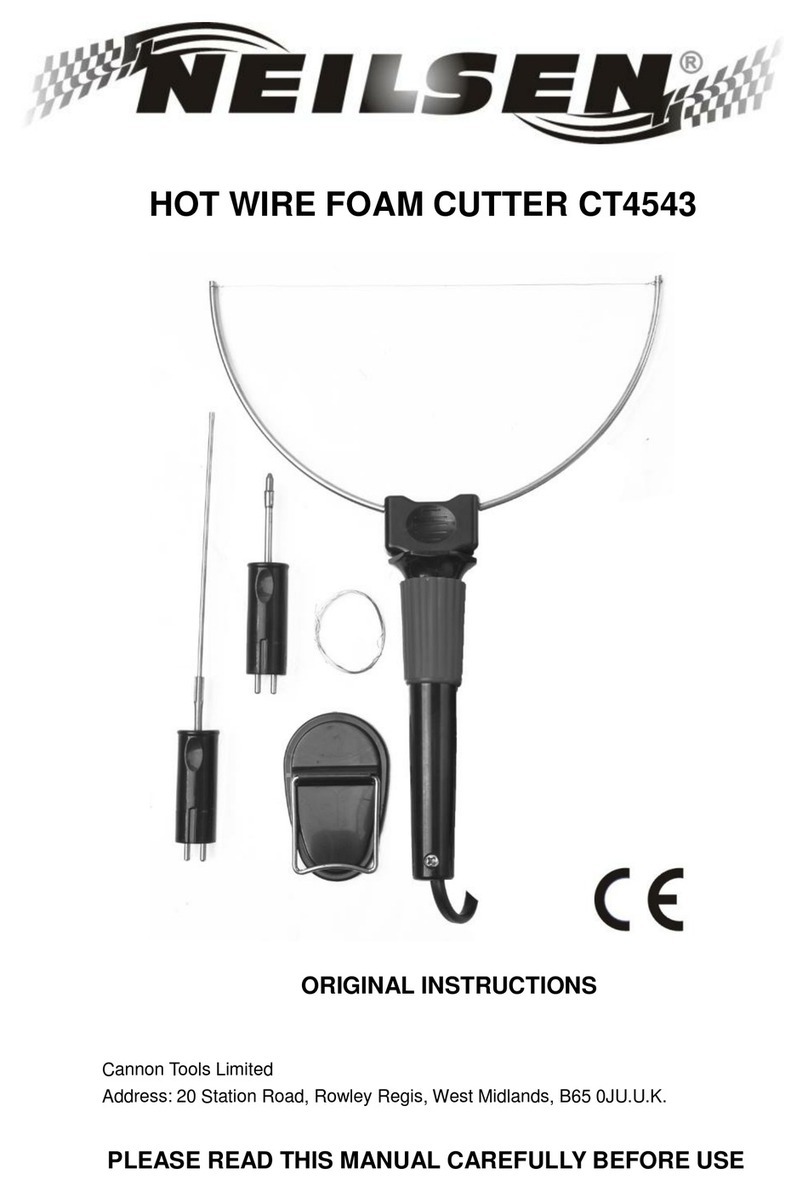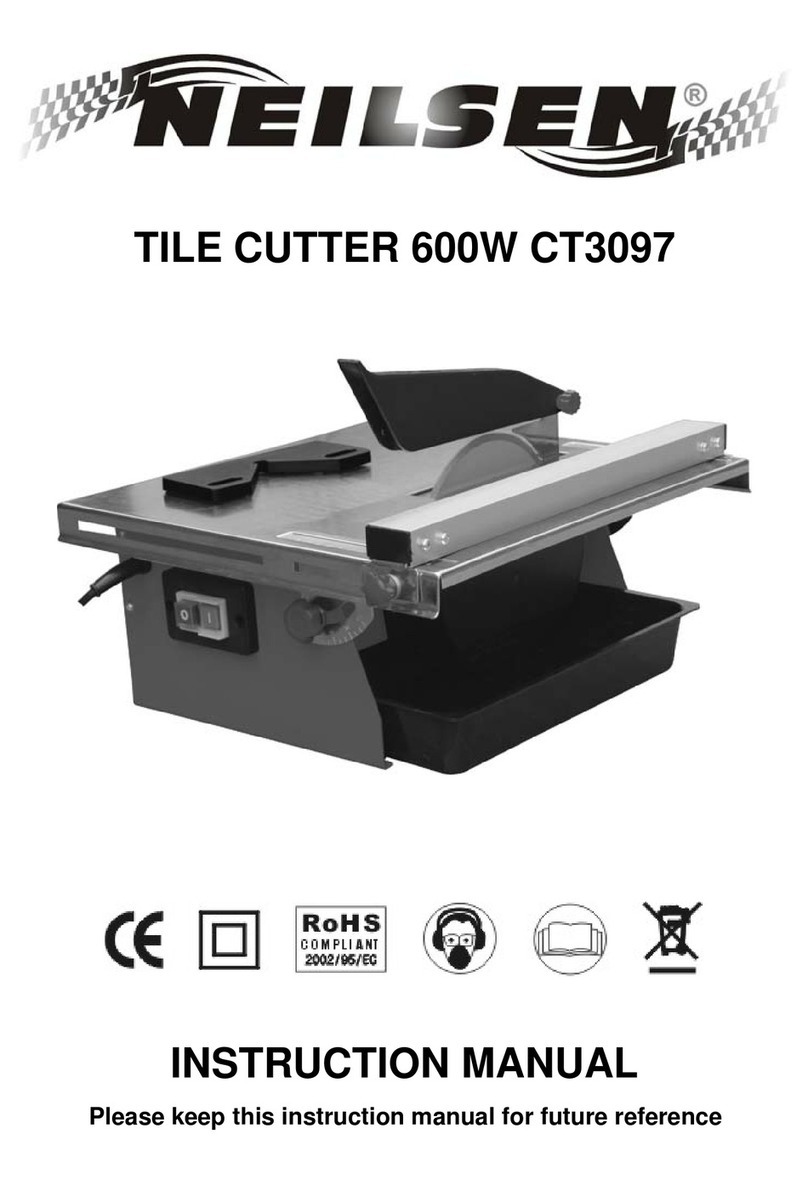
If working above the head, wear a protective helmet. When the movement of the
cutting disc stops, hold the disc all the time in such a position that it does not
come into contact with any object. The cut off tool can only be set down when the
cutting disc has come to a complete standstill. During cutting, the workpiece
should be supported in such a way that the cutting gap is maintained at a
constant or increasing width until the cutting is completed. If the cutting disc is
jammed in the cutting gap, switch off the tool and then release the cutting disc.
Before continuing to work, check whether the cutting disc is still correctly
mounted and has not been damaged. Cutting disc should not be used for lateral
grinding. Cut off tool must not be used beyond the maximum peripheral speed of
the cutting disc. The operator must ensure that there are no unauthorised
persons in the workplace area. Wear personal protective equipment such as:
fitted gloves, apron and a helmet. Sparks from work can ignite clothing and
cause severe burns. Make sure the sparks do not fall onto the clothing. Wear
fireproof clothing and keep a bucket of water near you.
Hazards connected with repetitive movements
When using an air tool for work entailing repetitive movements, the operator is
exposed to the discomfort of hands, arms, shoulders, neck or other parts of the
body. When using an air tool, the operator should take a comfortable posture
to ensure the feet are correctly positioned and avoid strange or unbalanced
postures. The operator should change the posture over a long period of time to
avoid discomfort and fatigue. If the operator experiences symptoms such as
persistent or repeated discomfort, pain, pulsating pain, tingling, numbness,
burning or stiffness, the operator is required to report the symptoms to the doctor.
The operator should not ignore them, should tell the employer about it and
consult a doctor.
Hazards connected with accessories
Disconnect the tool from the power supply before replacing the inserted tool or
accessory. Use accessories and consumables only in the sizes and types
recommended by the manufacturer. Do not use other types or sizes of
accessories. Make sure that the dimensions of the cutting disc are compatible
with those of the air cut off tool and that the cutting disc fits the spindle of the
tool. Check the cutting disc before use. Do not use cutting discs which have






























